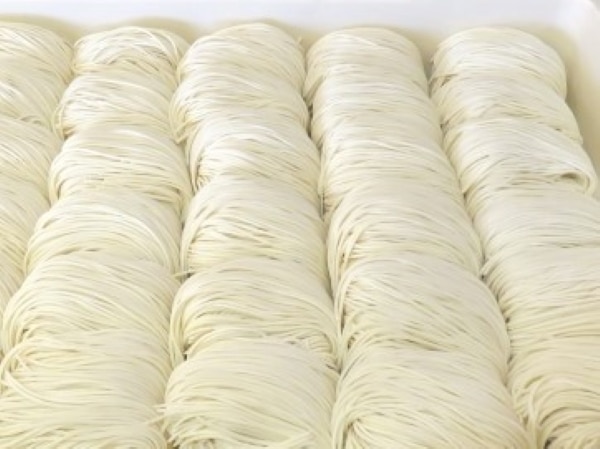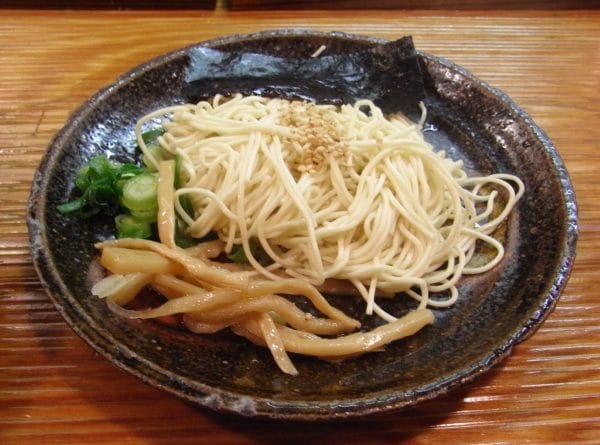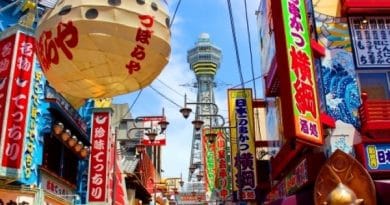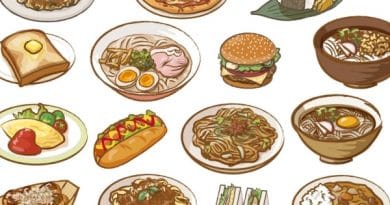How To Eat Extra Kaedama Noodles In Ramen Shop
One of the best-loved Japanese food in the world must be Ramen these days. You might find many ramen restaurants in your country. With its cheap, easy to fun, but delicious taste, Ramen is getting more and more popular. Yet, when you had Ramen, you might have felt like, “It was delicious but wanna eat a little more.”. It’s good to have some side dishes. But for those who want to enjoy Ramen itself more, there is Kaedama noodles system in many Ramen restaurants.
What Is Kaedama?
“Kaedama” means extra ramen noodles, and quite a few ramen restaurants offer this system. More specifically, if you go to Hakata city in Fukuoka, a holy place of Ramen, almost every restaurant has the Kaedama system, and it is originally from Fukuoka.
Difference between Oomori
Even if a restaurant doesn’t have Kaedama, they must offer “Oomori (large portion)” option instead. Fukuoka-style ramen usually has thin noodles, which don’t take much time to boil it. Therefore, ramen shops that serve thick noodles often do not offer Kaedama. And Kaedama is also to prevent the noodles from getting soggy.
How To order In Ramen Shops
You can simply ask the staff for Kaedama. The staff will bring boiled noodles on a plate. You can just put the noodles straight into the soup.
Firmness of Ramen Noodles

When you order Ramen, you can choose how firm the noodles should be according to your preference. The same applies when you order Kaedama. Here is the list of firmness types with approximate boiling time and their meanings in the order of softest to firmest.
- ばりやわ (bariyawa) [100 – 150 seconds] = very soft
- やわ (yawa) [70 – 100 seconds] = soft
- ふつう (futsuu) [45 – 70 seconds] = normal
- かため (katame) [20 – 45 seconds] = firm
- ばりかた (barikata) [15 – 20 seconds] = very firm
- はりがね (harigane) [7 – 15 seconds] = wire
- こなおとし (konaotoshi) [3 – 7 seconds] = brush off powder
- ゆげとおし (yugetooshi) [0 – 3 seconds] = pass the steam
*Except “futsuu”, you may use these words only at ramen restaurants. So, you don’t need to memorize them for the purpose of learning Japanese.
Those in bold are quite common, and almost every ramen shop offers them. But others are a bit unique, and you won’t find them on a menu list. However, some restaurants provide with flexibility even if they aren’t written on the menu. If you are not familiar with Japanese Ramen, I recommend trying “futsuu (= normal)” first and order “katame (= firm)” for Kaedama to enjoy the flavor of the flour.
When To Order
It usually takes only a few minutes to prepare for Kaedama. So, I recommend you to ask for it just before you finish eating the first round. If you order after finishing the first round, the soup gets colder, and you won’t fully enjoy the second round.
Tips To Enjoy Kaedama

Add Some Seasonings
Since the soup gets a bit milder when you put Kaedama, it’s better to adjust the taste with seasonings as you like. (Most ramen shops have various seasonings on the table so that the customers can change the taste to their preference.) So, when you intend to order Kaedama, please enjoy the first round as it is without any seasonings.
Leave Soup at First Round
Ramen without sufficient soup isn’t Ramen. In most ramen shops, they will not add extra soup even when you order Kaedama because it takes the highest cost. Not only with its cost, but ramen shops also take lots of effort making Ramen soup with an average of more than 5 hours.
In your country, most of the Japanese restaurants serving Ramen might not have Kaedama system. But if it’s a ramen specialty restaurant and the shop owner is familiar with Japanese Ramen, they might have it. And when you come to Japan, please try it once! Some restaurants offer the first round of Kaedama for free.





is there someone who can speak japanese???
Yes, mainly in Japan it seems.